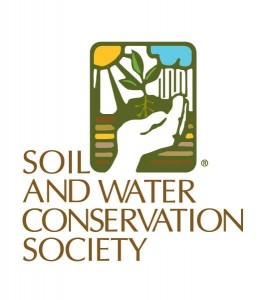The Oregon Chapter was highlighted in the SWCS Conservogram this past March 2016. Below is the article excerpted or you can access the newsletter here: March Conservogram-Oregon spotlight
CONSERVOGRAM
Chapter Spotlight: Oregon Chapter
History of the chapter:
The history of the Oregon Chapter (OSWCS) is somewhat unclear. We do know that in 1966 there were Chapter By-Laws. The best history we can derive comes from our long-standing President Russ Hatz who joined the OSWCS in 1984 at a time when the Chapter was quite active. Russ was elected president in 2007, and he remained Chapter president until 2014 when he retired. During Russ’s time the Chapter sponsored a number of workshops and events.
• In 2010 at the St. Louis National SWCS meeting we showcased “Comparing Three Case Studies in Nutrient Trading.”
• In 2011 we sponsored an SWCS regional workshop: Protecting Natural Resources with Conservation Buffers.
• In 2012 and 2013 we co-sponsored (with the Benton SWCD) two SWCS regional workshops on soil quality.
• In 2014 we sponsored a SWCS regional workshop on agroforestry.
Please describe your most successful chapter event in the last year. What did members gain from this experience? Natural resource professionals from across Oregon as well as Washington joined us for an Introduction to Streambank Classification, Channel Evolution, Floodplain Connectivity and Field Measures at the USDA Natural Resources Conservation Service (NRCS) Service Center in Salem, Oregon. The class was highly informational and condensed several lecture hours into a short course for an introduction to stream classification techniques, stream geomorphology, and delineating criteria to identify stream types. The morning was scheduled with classroom presentations and then followed by an afternoon on Abiqua Creek applying some basic stream measurements to determine stream types. The class was provided with some technical literature and a clipboard reference Key to Rosgen Classification of Natural Rivers. It was a record breaking hot day in Marion County. Abiqua Creek provided some relief from the heat, but all in all it was a very rewarding educational day!
What other activities has your chapter been involved in this year? In an effort to put the Society back into our Chapter events, we put together a weekend camping trip on the Rogue River back on Memorial Weekend of 2015 and volunteered as a Chapter with SOLVE to participate in the annual Rogue River Clean-Up. A few members attended and we spent the weekend camping, hanging out riverside, and cleaning up garbage along the Rogue River in southern Oregon.
(SOLVE is a nonprofit organization that brings together individuals, business groups, and service and conservation groups through volunteering and education to restore our natural spaces and take good care of this great state of which we are all so proud. SOLVE facilitates Oregonians of all kinds coming together to volunteer, focusing on
Iowa beach and illegal dump cleanup, planting native trees, removing invasive plants, and other environmental maintenance projects. SOLVE annually creates an average of 40,000 volunteer opportunities in 170 communities all across this diverse state. More information can be found at www.solveoregon.org)
What is your membership’s preferred method of communication? At this time we mainly communicate via e-mail and teleconference meetings. We are working on other ways to communicate and engage the membership and recently started a Facebook page and revamped our website.
What would you say are the most important current conservation concerns for your region? The most important resource concerns in our region are water quantity and water quality. Drought has plagued the state of Oregon for the last four years, and Oregonians are looking for ways to conserve water resources and protect water quality.
What is your favorite part of membership in SWCS? The Chapter members appreciate the OSWCS as a vehicle for professional development as well as a way to meet others in our field throughout the state. Networking provides many benefits, and we have been working to improve the member benefits of social interactions and professional development.
What advice would you give to a new chapter? Reach out and strive for a diverse membership base composed of individuals from the many walks of life who make up the professional conservation front. Provide consistent membership opportunities for networking, professional development, and the distribution of current information on conservation issues and policy. Maintain steady communication and leave room for the ideas and suggestions of your membership to be realized. In a world where the internet has pulled us together nationally but has separated us as individuals, it has become harder to engage the membership, so think of unique ways to connect with your membership and keep them interested in participating.
For questions about the chapter/membership, please contact: Brenda Sanchez, soilpedon@gmail.com
